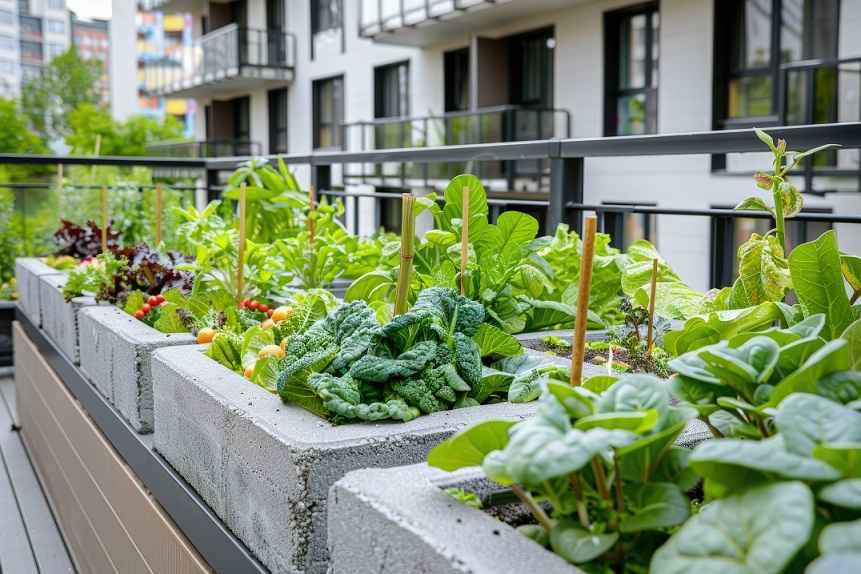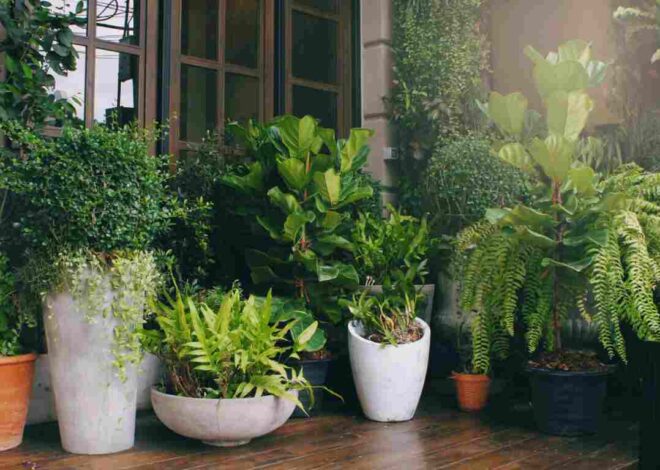
Aquaponic Gardening 101: Understanding the Basics and Benefits
Welcome to the world of aquaponic gardening, where sustainability meets innovation! If you’re looking for a way to grow your own fresh produce while minimizing waste and maximizing efficiency, then you’ve come to the right place. In this blog post, we will dive into the basics of aquaponics – a revolutionary method that combines aquaculture and hydroponics to create a self-sustaining ecosystem. Get ready to discover how this eco-friendly practice can not only benefit your garden but also contribute to a healthier planet. Let’s get started on our journey into the fascinating world of aquaponic gardening!
Introduction to Aquaponic Gardening
Are you looking to take your gardening skills to the next level? If so, aquaponic gardening might just be the green-thumb solution you’ve been searching for! Imagine a sustainable ecosystem where fish and plants work together harmoniously to create a thriving garden. In this Aquaponic Gardening 101 guide, we will delve into the basics of this innovative gardening method and explore its numerous benefits. Let’s dive in!
Understanding the Basics: Aquaponic System Components
Aquaponic gardening relies on a few key components to create a thriving ecosystem. Let’s dive into the basics of these essential elements.
First up, we have the fish tank. This is where aquatic creatures like tilapia or goldfish reside, producing nutrient-rich waste that fuels plant growth.
Next, we have the grow bed where plants are housed. The grow bed is filled with a growing medium like clay pebbles or gravel, allowing plants to anchor their roots and absorb nutrients from the water.
The water pump and filtration system play a crucial role in circulating water between the fish tank and grow bed while removing any solid waste that could harm the fish or plants.
Beneficial bacteria act as nature’s recycling team by converting harmful ammonia from fish waste into nitrites and then nitrates that plants can readily absorb for nourishment.
Understanding these fundamental components is key to setting up a successful aquaponic system that promotes sustainable gardening practices.
-
Fish Tank
Aquaponic gardening revolves around a delicate balance between fish and plants, creating a harmonious ecosystem that benefits both. At the heart of this system is the fish tank, where aquatic life plays a crucial role in providing nutrients for plant growth.
The fish tank serves as more than just a home for your finned friends; it acts as the source of organic waste that will be broken down into nitrates by beneficial bacteria. These nitrates are then absorbed by the plants in the grow bed, completing the cycle of nutrient-rich water circulating between fish and flora.
Choosing the right type and number of fish is essential to maintaining equilibrium within your aquaponic setup. Different species have varying waste outputs and dietary needs, so careful consideration must be taken to ensure a thriving environment for all inhabitants.
By understanding the significance of the fish tank in an aquaponic system, you can appreciate how each component works together seamlessly to create a sustainable and efficient method of gardening.
-
Grow Bed
The grow bed is a vital component in an aquaponic system, where plants receive their nutrients. It’s typically filled with a medium like clay pellets or gravel for the plants to anchor their roots into. The water from the fish tank flows into the grow bed, providing essential nutrients for plant growth.
As the water circulates through the grow bed, it allows plants to absorb nutrients and filter out impurities. This symbiotic relationship between fish waste and plant roots creates a balanced ecosystem where both thrive together. The plants help purify the water for the fish while receiving necessary nourishment in return.
The design of the grow bed is crucial as it affects water flow and oxygen distribution within the system. Proper sizing and placement ensure optimal conditions for plant growth and overall system efficiency. By understanding the role of the grow bed, aquaponic gardeners can create thriving environments for both fish and plants in their systems.
-
Water Pump and Filtration System
In an aquaponic system, the water pump and filtration system play a crucial role in maintaining a healthy environment for both the fish and plants. The water pump is responsible for circulating water from the fish tank to the grow bed, ensuring that essential nutrients are distributed evenly.
A good filtration system helps remove solid waste and excess nutrients from the water, preventing buildup that could harm your aquatic friends. By keeping the water clean and oxygenated, these components work together to create a harmonious ecosystem where fish waste is converted into plant food.
Choosing the right size pump and filter for your setup is key to achieving optimal performance. Proper maintenance of these components will ensure smooth operation of your aquaponic garden. Remember, a well-functioning pump and filter are essential for the success of your aquaponic venture!
-
Beneficial Bacteria
In the world of aquaponic gardening, beneficial bacteria play a crucial role behind the scenes. These microscopic heroes are responsible for breaking down fish waste into essential nutrients that plants can absorb. As fish excrete ammonia, these bacteria convert it first into nitrites and then into nitrates, which act as fertilizer for the plants in the system.
Without these helpful microorganisms, the delicate balance within an aquaponic setup would be disrupted, leading to potential issues like ammonia buildup harming the fish or nutrient deficiencies affecting plant growth. By establishing a healthy colony of beneficial bacteria in your system, you can ensure smooth operation and optimal conditions for both your aquatic friends and plant companions.
It’s fascinating how something so tiny can have such a profound impact on the overall success of your aquaponic garden. So next time you marvel at your flourishing greens or happy fish swimming about, remember to thank these unsung champions working tirelessly behind the scenes to keep everything thriving harmoniously.
How Does it Work?
Ever wondered how aquaponic gardening actually works? Let’s dive into the fascinating process behind this sustainable growing method.
At the heart of an aquaponic system lies the nitrogen cycle. This natural process starts with fish waste breaking down into ammonia in the water. Beneficial bacteria then convert this toxic ammonia into nitrites and finally nitrates, which serve as essential nutrients for plants.
The synergy between fish and plants is key in maintaining a balanced ecosystem. Fish provide the necessary nutrients for plant growth through their waste, while plants act as natural filters, purifying the water for the fish to thrive.
By harnessing this symbiotic relationship, aquaponic gardening maximizes efficiency and minimizes waste. It’s a harmonious cycle where each element plays a vital role in sustaining life within the system.
-
The Nitrogen Cycle
Aquaponic gardening relies on a fascinating natural process known as the Nitrogen Cycle. In this cycle, fish produce ammonia waste, which is then converted into nitrites by beneficial bacteria in the system. These nitrites are further processed into nitrates, which serve as essential nutrients for plant growth.
By harnessing this cycle, aquaponic systems create a symbiotic relationship between fish and plants. The fish provide nutrients for the plants through their waste, while the plants help to filter and purify the water for the fish. This interconnected ecosystem results in a sustainable and self-sufficient way of growing food.
Understanding how the Nitrogen Cycle functions is crucial for maintaining a healthy and balanced aquaponic system. By ensuring that all components work harmoniously together, you can optimize plant growth and maximize crop yields in your garden.
-
The Role of Fish and Plants in an Aquaponic System
In an aquaponic system, fish and plants play crucial roles in creating a harmonious ecosystem. The fish provide essential nutrients through their waste, which is converted by beneficial bacteria into forms that plants can absorb. This relationship forms the basis of sustainable gardening practices.
The fish contribute to the nitrogen cycle by producing ammonia, which is then broken down into nitrates by bacteria. These nitrates serve as fertilizer for the plants, promoting healthy growth and yields. As the plants take up these nutrients from the water, they help purify it for the fish, completing a natural cycle of nutrient exchange.
This dynamic interaction between fish and plants not only benefits each other but also minimizes waste production and maximizes resource efficiency within the aquaponic system. It showcases nature’s ability to create self-sustaining ecosystems where every component plays a vital role in supporting overall health and productivity.
Benefits of Aquaponic Gardening
Aquaponic gardening offers a plethora of benefits that make it an attractive option for both seasoned gardeners and beginners alike. One of the key advantages is its sustainability and eco-friendliness. By using fish waste to fertilize plants, aquaponics creates a closed-loop system that conserves water and reduces chemical usage.
Additionally, aquaponic systems are space-saving marvels. Perfect for urban dwellers or those with limited outdoor space, these setups allow you to grow your own fresh produce without needing vast expanses of land.
In terms of time efficiency, aquaponic gardening shines as well. The symbiotic relationship between fish and plants means less maintenance compared to traditional gardening methods. With fewer tasks like weeding and watering, you can spend more time enjoying the fruits (and veggies) of your labor!
Overall, embracing aquaponic gardening not only benefits your household but also contributes positively to the environment by promoting sustainable practices in food production.
-
Sustainable and Eco-Friendly
Aquaponic gardening is not just a trend; it’s a sustainable and eco-friendly way to grow your own food. By combining aquaculture with hydroponics, this system creates a closed-loop cycle that minimizes waste and maximizes efficiency.
In aquaponics, fish waste provides nutrients for plants, while the plants naturally filter and clean the water for the fish. This natural symbiotic relationship reduces the need for chemical fertilizers and pesticides typically used in traditional farming methods.
Not only does aquaponic gardening help conserve water by recycling it within the system, but it also eliminates soil erosion since plants are grown without soil. This method of cultivation significantly reduces environmental impact compared to conventional agriculture practices.
Embracing aquaponic gardening is not only beneficial for your homegrown produce but also contributes positively to our planet by promoting sustainability and eco-friendliness. So why not join the movement towards greener living with aquaponics?
-
Saves Space, Time,
Aquaponic gardening is not only a sustainable and eco-friendly way of growing plants but also a method that saves space and time. By utilizing the symbiotic relationship between fish and plants, this system maximizes efficiency in both food production and waste management. The closed-loop design eliminates the need for constant watering and fertilizing, making it an ideal choice for those looking to cultivate their own produce with minimal effort.
Incorporating aquaponics into your gardening routine can be a rewarding experience that not only benefits you but also contributes to the health of our planet. So why not give aquaponic gardening a try? It’s space-saving, time-saving, and environmentally friendly – the perfect combination for modern-day gardeners looking to make a positive impact through their love of greenery.


